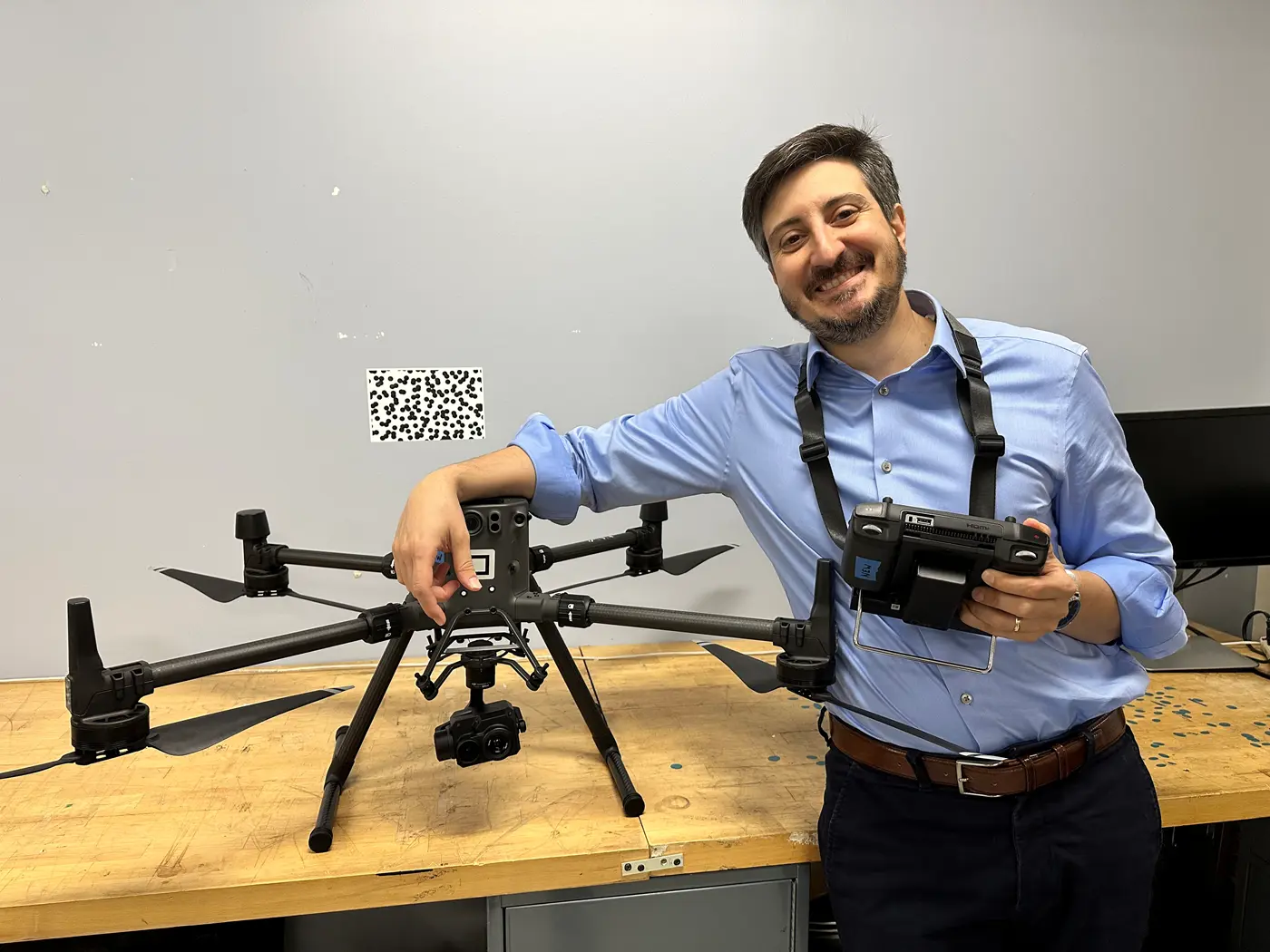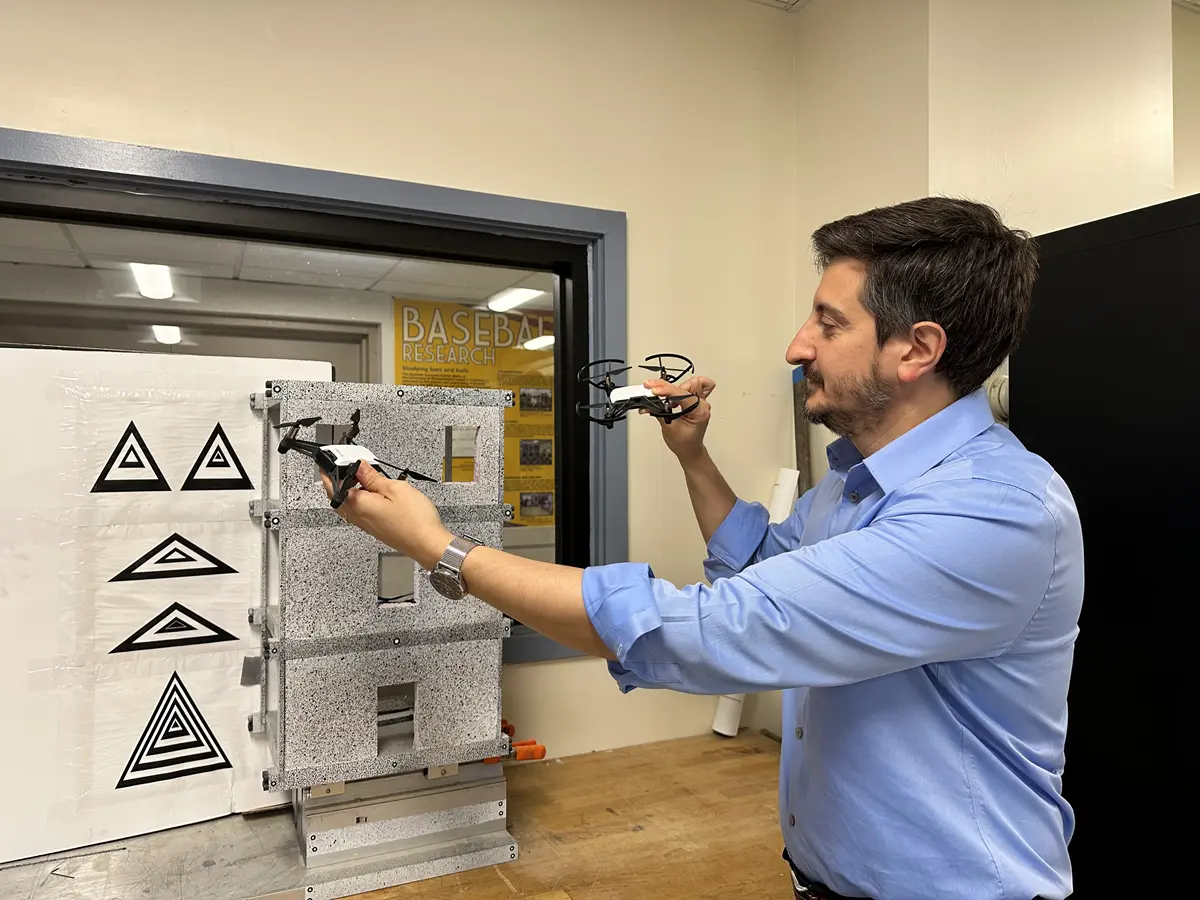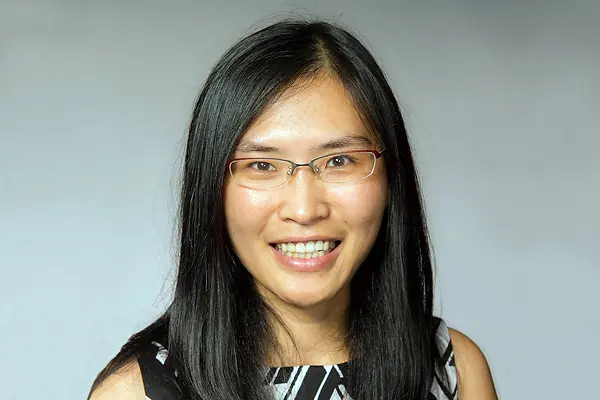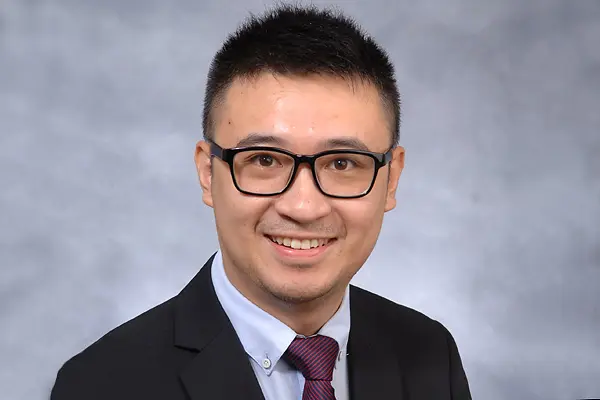 Image by K. Webster
Image by K. Webster
Mechanical Engineering Asst. Prof. Alessandro Sabato won a $608,000 National Science Foundation CAREER award for his research on using drone cameras to inspect bridges, dams and wind turbines.
Thoroughly inspecting large structures like bridges, dams, railroad lines and wind turbines is an expensive and time-consuming process.
Mechanical and Industrial Engineering Assistant Professor Alessandro Sabato aims to make it faster, more cost-effective and safer by using cameras mounted on drones.
In June, his research got a big boost: a five-year National Science Foundation CAREER grant for nearly $608,000. The grants from the NSF’s Faculty Early Career Development Program go to junior faculty whose research shows exceptional promise.
Sabato was thrilled with the recognition and research support.
“This is the most prestigious grant you can win as an assistant professor,” he says. “It’s going to allow me to establish myself, both research-wise and education-wise, for monitoring large-scale infrastructure.”
Sabato had previously been awarded $134,000 over two years to develop image-processing software that, using video taken by a stationary camera, can detect side-to-side motion in wind turbines that is not detectable with the naked eye. Excessive motion indicates a serious problem, such as cracking in the turbine’s foundation, that could lead the structure to fail.
That money came in 2022 through WindSTAR (Wind-Energy Science, Technology and Research), an industry-university cooperative research center at UMass Lowell that is funded by the National Science Foundation.
Sabato’s new research under the NSF CAREER Grant will help him to continue developing software that can analyze images from two cameras on two separate drones, allowing for three-dimensional pictures and video of the structures being analyzed.
 Image by K. Webster
Image by K. Webster
Sabato demonstrates how he can create a stereoscopic image of a structure using two drone cameras and visible features on the structure's surface.
“My previous research was 2D, but real structures are 3D; they move in a 3D space, and some of that motion might actually be important for their structural behavior and resiliency,” he says.
“For example, a bridge can expand and contract, move up and down or side to side, and it can twist, or torque, so you want to be able to capture all those different motions. With a single camera, you may not be able to do that,” he says.
Previously, stereoscopic 3D images could only be generated by using two cameras at a fixed distance from each other, usually at either end of a bar on a single drone, he says.
The new software Sabato is developing merges video from two cameras on two independent drones, correlating the images through fixed features on the structure itself, such as bolts and joints.
“I have a system for tracking the position of two separate drones, and at every instant in time I know where those drones are,” he says. “I can always triangulate between the two drones and the structure.”
Sabato has already tested the system in the lab on small structures that are speckled with randomly placed dots of different sizes. Once he is able to hire a new Ph.D. student with the grant funding – he’s looking for someone interested in processing images and information from multiple sensors – and further develop the software, they will test it on highway bridges and wind turbines.
The grant also has an educational component. Sabato says it includes money to hire an undergraduate each summer to help develop training modules for drone operators.
Working with MassHire, the state employment agency, and Seven Hills Foundation, which provides support for people with disabilities, Sabato and his students will train people to use drones with cameras for infrastructure inspections.
They will also train some UMass Lowell undergraduates to operate the drones, in part by creating an “AI-lympics” that will test whether the students can accurately fly a drone faster than artificial intelligence (AI).
“I’m going to build a track and ask students to fly a drone over the track and see how fast they can do it, like a drone race,” Sabato explains. “Then, I’m going to teach the same students to program the drone to fly that track autonomously, using AI, and see if it can be faster. It’s human versus machine.”


